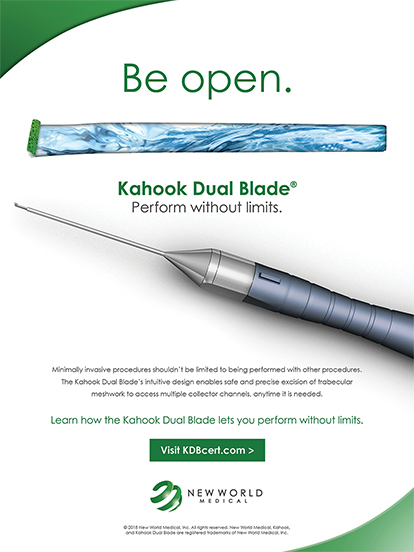I used to tell anyone who would listen that I was looking to find an extraordinary, life-altering, and cosmic something that could halt aging. As a young optometrist, I felt that finding a Fountain of Youth wasn’t out of the question. But as time progressed—along with the realization that my fantasy of starting a Lost Boy (and Girl, #feminism) colony was insane—I set my sights on another way to maintain youth: eliminating presbyopia.
The onset of presbyopia is a harbinger of old age, a defining moment in one’s life. This near-vision–destroying condition does not discriminate. The problem is not new. People have been trying to roll back this inevitable process for centuries. With bifocals and progressive lenses, multifocals and monovision, eye care providers have aimed to mitigate this sign of ocular aging. Somehow, however, discussion of corneal inlays for the treatment of presbyopia appears to have been lost in the ether.
FROM TWO OPTIONS…
Eye care’s innovative companies excel at creating devices that can directly benefit our patients. If clinicians do not enthusiastically embrace these technologies, they will not endure.
Case in point: We used to have two US Food and Drug Administration (FDA)-approved corneal inlay options. Both the »Kamra (Acufocus) and the Raindrop (ReVision Optics) were available until, in February of this year, the latter company ceased operations. (I mean, they didn’t even get into Canada, and the Great White North has historically been the United States’ preapproval testing grounds. Perhaps this should be a lesson to all companies that do not go through Canada first!)
The Raindrop was a formidable foe to presbyopia and provided a good percentage of patients with the near vision they had thought would never be returned. I find it hard to believe that there were not enough patients who want to relieve themselves of glasses and contacts and avoid a multifocal implant to support this product. In the case of Raindrop, it was a lack of enthusiasm from the eye care community that spelled doom for the product and its company.
…TO ONE
The Kamra was the first corneal inlay approved by the FDA. It is designed to be implanted in the nondominant eye. This microperforated, opaque inlay works by increasing the patient’s depth of focus by creating a shield against unfocused light. At 5.0 µm thick, with a central aperture of 1.6 mm and an overall diameter of 3.8 mm, the Kamra is barely cosmetically noticeable. It creates a large improvement in near vision while maintaining the eye’s good distance vision. The inlay has more than 8,000 randomly placed holes to ensure that nutrient flow is uninterrupted by its presence.
The device was originally designed to be placed under a flap, but Acufocus adopted a procedure that allows the inlay to be placed in a pocket created by a femtosecond laser. The characteristics of the ideal patient:
- 45 to 55 years old;
- +0.50 D to -0.75 D sphere;
- < 0.75 D cylinder;
- > 500 µm pachymetry;
- mesopic pupil < 6.0 mm.
The most important element is that the patient should desire to be spectacle-free. In my experience, these patients are excited by the chance to restore their near vision but are unsure what to expect. Optometrists’ familiarity with presbyopia make us qualified postoperative managers for these patients.
Nobody wants to have to guess what food is on their plate, ask someone to help them read a text message, or fumble for readers after they had LASIK years ago. Let’s not allow an opportunity to pass our patients. Let’s at least give them the option to decide if a corneal inlay is right for them.






